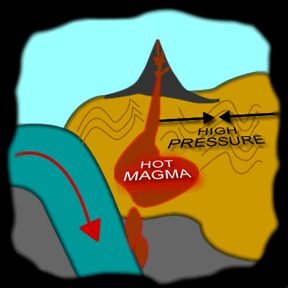Metamorphism usually happens where plates are coming together; rocks are heated and are under high pressure.
L.Gardiner/Windows Original
Metamorphic Rocks
Have you have heard that caterpillars metamorphose into butterflies?
Rocks can metamorphose too! They change when they are in a place that is very hot with high pressure. One place like this is where the pieces of Earth's outer layer are crashing into each other.
Any type of rock can change into a metamorphic rock. The rocks are changed either in small areas or large areas.
Some rocks only change a little, while others change a lot. When a rock is metamorphosed, its mineral crystals change. Usually, the same chemical ingredients are used to form new crystals during metamorphism. Sometimes new types of minerals grow that weren't in the rock before. Often, flat minerals like mica become lined up forming little layers called foliation.
Figure out foliation!
Try this experiment to figure out how minerals line up when a rock is under pressure.
- Add mica flakes to a piece of play dough. The dough will represent a rock undergoing metamorphism.
- Knead the dough until the mica flakes are well-incorporated roll your dough into a ball.
- Break the ball of dough in half. The flakes will be oriented in all different directions just as they would be in an unmetamorphised rock.
- Take one half of the ball and flatten it with the palm of your hand. The pressure that you are applying to the dough is like the pressure placed on our rocky Earth by the forces of plate tectonics.
- Break the flattened dough in half and look at what has happened to the mica flakes!
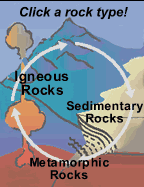
Last modified June 20, 2003 by Lisa Gardiner.
You might also be interested in:
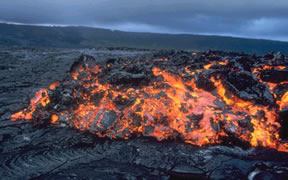
Basalt is volcanic rock. It is the most common type of rock in the Earth's crust and it makes up most of the ocean floor. It forms when lava reaches the Earth's surface at a volcano or mid ocean ridge.
...more
These types of igneous rocks are made deep underground. In fact, it is possible that below your feet, deep within the Earth there are igneous rocks being made right now! There, hot magma cools very slowly.
...more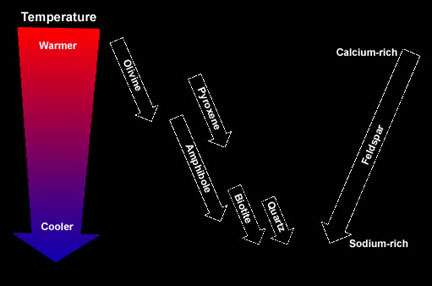
Deep inside the Earth, or at a volcano, melted rock is becoming solid mineral crystals. Some minerals, like olivine, make crystals when the hot liquid rock is still very hot. Other minerals, like biotite
...more
Pretend that you are an explorer traveling to the center of the Earth. You would find that the deeper you travel, the hotter it gets! Beneath the crust, in the mantle layer, it is hot enough that rock
...more
Granite is a common type of igneous rock. Look at it closely and you can see small white, pink, and black crystals. Some granite has tons of pink crystals and some has more white ones. Click on the picture
...more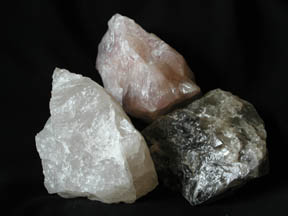
Spotting minerals is fun! There are many different types of minerals. Each has a different name and special traits. You can learn more about minerals by looking closely at them to understand their special
...more
This mineral is called quartz! Sometimes it looks white like milk but usually it looks clear like glass, sometimes with a little pink or gray tinge of color. You can find crystals of quartz in many different
...more
